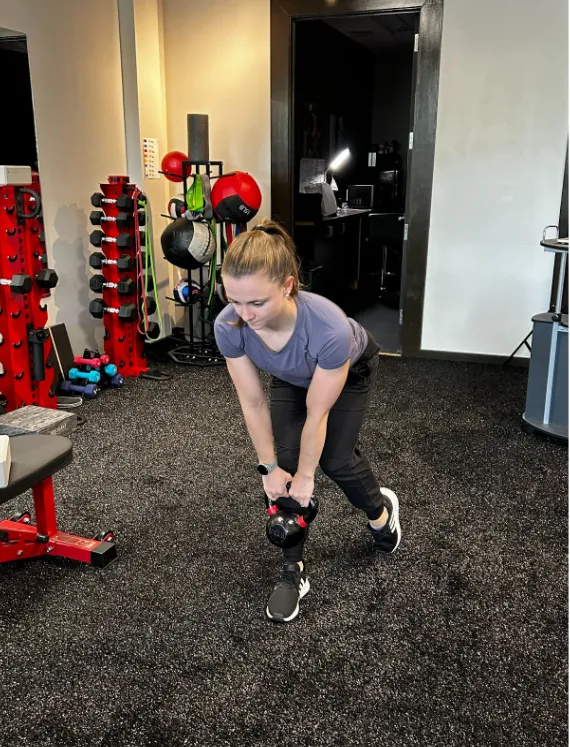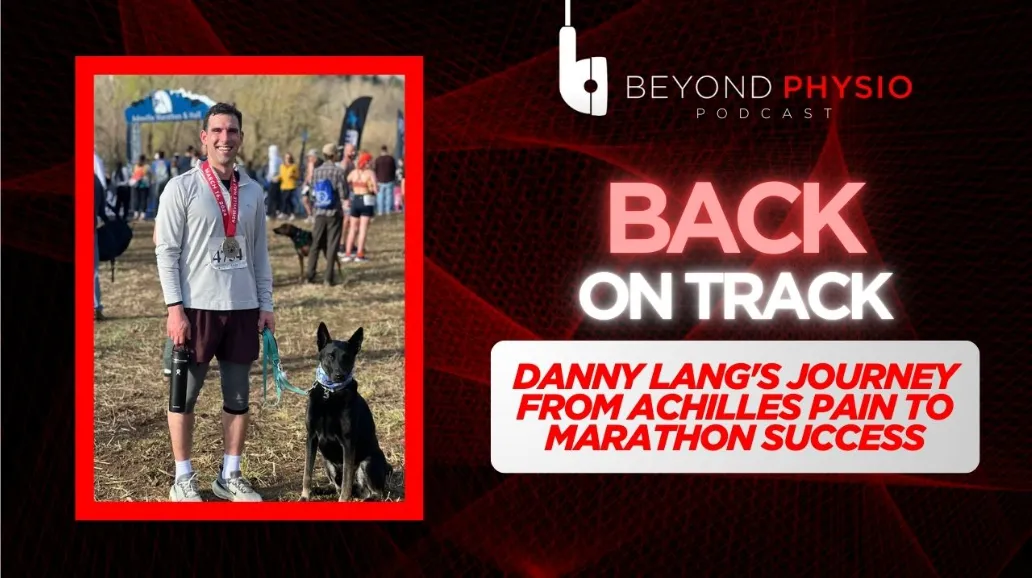Avoid Running Injuries This Fall in Your 40s and 50s
By Dr. Jerry Yoo, Founder of Next Level Physio
7 MINUTE READ
Key Points:
Overuse injuries are common: These occur when the body’s capacity to recover is exceeded by the training load, leading to injuries like ITB syndrome or runner’s knee.
Structured training plans are essential: A well-designed training plan with gradual mileage increases helps prevent injury, as seen in Pete’s success story.
Adequate recovery time: Incorporating rest days and alternating intense and easy workouts ensures proper recovery and reduces the risk of injury.
Strength and cross training support: Bodyweight exercises and stability routines strengthen the body without adding unnecessary fatigue, helping to prevent injuries.
Adaptation through recovery weeks: Scheduling lighter weeks during the training cycle allows the body to adapt and improve fitness without risking overuse injuries.
As a runner in my late 40s, I have noticed that my body doesn’t bounce back the way it used to. Recovery takes longer, and warm-ups definitely take longer!
Many of the runners we see in my age group and beyond also report that injuries seem to creep up more often than they did in their 20s and 30s. Whether you’re training for a marathon or simply enjoying your weekly long runs, avoiding injury becomes more challenging as we age.
While it’s easy to point to the usual suspects—like running form or shoes—many runners overlook the more subtle but equally important factors that contribute to injuries. Let’s dive into the often forgotten or less commonly discussed reasons why runners in this age group face injuries, and how to prevent them.
1. Overuse Injuries Are More Common Than You Think
By far, the most common reason runners end up sidelined is overuse from training load. When we talk about overuse injuries, we’re referring to issues like plantar fasciitis, Achilles tendinitis, stress reactions, hamstring strains, or runner’s knee to name a few.
These injuries can happen when your training load—the number of miles or intensity of your workouts—exceeds your body’s ability to recover. Using the RPE (Rate of Perceived Exertion) scale, if you’re always feeling like a 7 out of 10 effort on your running workouts, your training load is likely too high, and:
Training load + poor running form + poor strength training + poor nutrition + poor sleep= HIGH risk for running injuries
As we age, our capacity to recover naturally diminishes. You may find that what worked for you in your 30s no longer holds up as you enter your 40s or 50s. This is because our bodies need more time to repair muscles, joints, and tendons. But many runners ignore this and continue pushing themselves without recognizing that their bodies can’t adapt as quickly anymore.
Tip: To avoid overuse injuries, pay attention to how your body feels after each workout. If you notice persistent aches or fatigue that lasts longer than usual, take it as a sign to dial back the intensity or mileage and report this to your coach or schedule a FREE Runners Assessment at Next Level Physio in Cary.
2. Structured Training Plans Are More Important Than Ever
One of the biggest mistakes I see runners in their 40s and 50s make is not having a structured training plan. Sure, you may have been able to wing it in your younger days, but as we age, our bodies crave routine and consistency. A well-designed training plan allows for gradual mileage increases, giving your body the time it needs to adapt to the demands of long-distance running.
Take the story of my client, Danny, for example. Danny had struggled with Achilles and calf pain in his previous marathon training attempts and summer training for the upcoming City of Oaks Marathon. His plan was self-directed, which may be fine for some people, but it led to chronic calf and Achilles injury over the summer.
While we treated his Achilles with our root cause running approach, we connected him with our Team Next Level Run Coaching Staff. Since then, Danny has been running faster and without an Achilles issue. He found his customized running plan to be a key element to his success.
You see, it wasn’t just about running more—it was about giving his body enough time to adapt.
Tip: If you’re not following a structured training plan, now’s the time to start. Make sure your plan includes gradual mileage increases and gives you plenty of time to ramp up before race day.
3. Adequate Recovery Time: Rest Is Not a Luxury—It’s a Necessity
When I speak to runners in their 40s and 50s, one thing I often hear is, "I don’t have time for rest days." But the truth is, adequate recovery time is essential for avoiding injuries, especially as you age. If you’re constantly pushing your body with no downtime, you’re setting yourself up for injury.
Incorporating rest days and alternating between hard and easy workouts ensures that your muscles, tendons, and joints have time to repair and grow stronger. If you’re skipping these crucial recovery periods, you’re not giving your body a chance to heal, which increases your risk of overuse injuries.
Tip: Schedule at least one full rest day each week and alternate between intense and easy workouts to allow your body the time it needs to recover.
4. Strength and Cross Training: Don’t Skip It!

Many runners in their 40s and 50s fall into the trap of thinking they don’t need strength or cross training. But as we age, maintaining muscle mass and joint stability becomes even more important for injury mitigation.
As I’ve said in past articles, injury prevention is a myth. Strength and cross training, particularly weighted and stability exercises, are key to keeping your body balanced, de-loaded, and strong without adding unnecessary fatigue.
I always emphasize a focus on single limb strength to work out our weak side- curtsy lunges, kickstand RDLs, single arm cable rows in standing, which target the muscles we use while running.
These exercises help you build the capacity and stability needed to handle long-distance running, while reducing the risk of injury. I also recommend cycling, swimming, rowing, or the Air Assault bike to mix up the demands we place on our joints while maintaining our cardio fitness.
Tip: Incorporate strength and cross training into your weekly routine with at least two sessions of strength and cross training exercises. Focus on areas like your hips to support your running form and prevent injuries.
5. Recovery Weeks: Don’t Forget to Back Off
Didn’t I just mention rest days earlier in the article? Yes! While recovery days are critical during a training week, recovery weeks are even more important on the road to your next marathon.
Listen, many runners make the mistake of thinking that marathon training—or any long-distance training—is a linear progression up to race day. They keep building up mileage or intensity without giving their bodies the chance to recover. However, training should come in waves, with periods of increased effort, intensity, and duration followed by lighter recovery weeks.
Recovery weeks are when your body truly adapts to and “absorbs” the stress of training. These lighter weeks, where you cut back on mileage and intensity, allow your cardiovascular system, muscles, and joints to repair and come back stronger. This is particularly important as you age, as your body takes longer to heal from hard workouts.
Tip: Schedule a recovery week every three or four weeks where you significantly reduce your mileage and intensity. This will allow your body to fully recover and prevent overuse injuries.
Conclusion: Listen to Your Body, Train Smart, and Stay Consistent
Running in your 40s and 50s can be incredibly rewarding, but it comes with its own set of challenges. The key to staying injury-free is understanding that your body now needs more care and attention than it did in your younger years. Overuse injuries, lack of recovery, and ignoring strength training are all too common mistakes that can be avoided with the right approach.
At Next Level Physio, we’ve worked with countless runners who have managed to continue running well into their 40s, 50s, and beyond—all while staying injury-resistant. It all comes down to smart training and programming, giving your body the recovery it needs, and supporting it with strength exercises.
If you’re ready to take your training to the next level and stay injury-free, reach out to us at Next Level Physio. Together, we can build a plan that works with your body, not against it.
Wondering how you can avoid injury and stay strong while running? Click here to ask about our Runners Strength Program for runners who want to stay ahead of injury
What Our Clients Say
"I came to Next Level Physio with some hip flexor tightness and within minutes Dr. Jerry and his team were able to diagnose strength and running form weaknesses that I had been putting off for years. Truly professional and knowledgeable team that are so fun to be around. I wouldn’t hesitate to go back. Highly recommend to all my fitness, running, and triathlon friends." - David Wolfson
"Before discovering Next Level Physio I was no longer able to run due to a chronic hamstring injury. I had been a runner who enjoyed half marathons and regular running schedule. Then 3 half marathons in consecutive months caused a hamstring injury. It was so painful I could not even run a 5K. I had given up on being able to run again.
Then a friend recommended I see Jerry at Next Level Physio in Cary, NC. He performed a thorough assessment and started a comprehensive treatment plan. This plan was very different from a typical physical therapist. It included strengthening exercises, dry needling, shock wave therapy, and blood flow restriction. And then I was able to slowly progress to a run and walk routine without any pain! I am very grateful and strongly recommend Jerry and Next Level Physio in Cary!" - Larry Pickett
Post Address and Mail
Email: info@nlphysio.com
Address
1055 Darrington Drive
Cary, NC 27513
Get In Touch
Hours
Mon - Fri: 9:00 am- 6:00 pm
Sat: By Appointment (8:00 am - 12:00 nn)
Sun: Closed
Phone Number:
919-650-4633
Office: 1055 Darrington Drive
Cary, NC 27513
Call 919-650-4633
Email: info@nlphysio.com
Site: www.nlphysio.com



